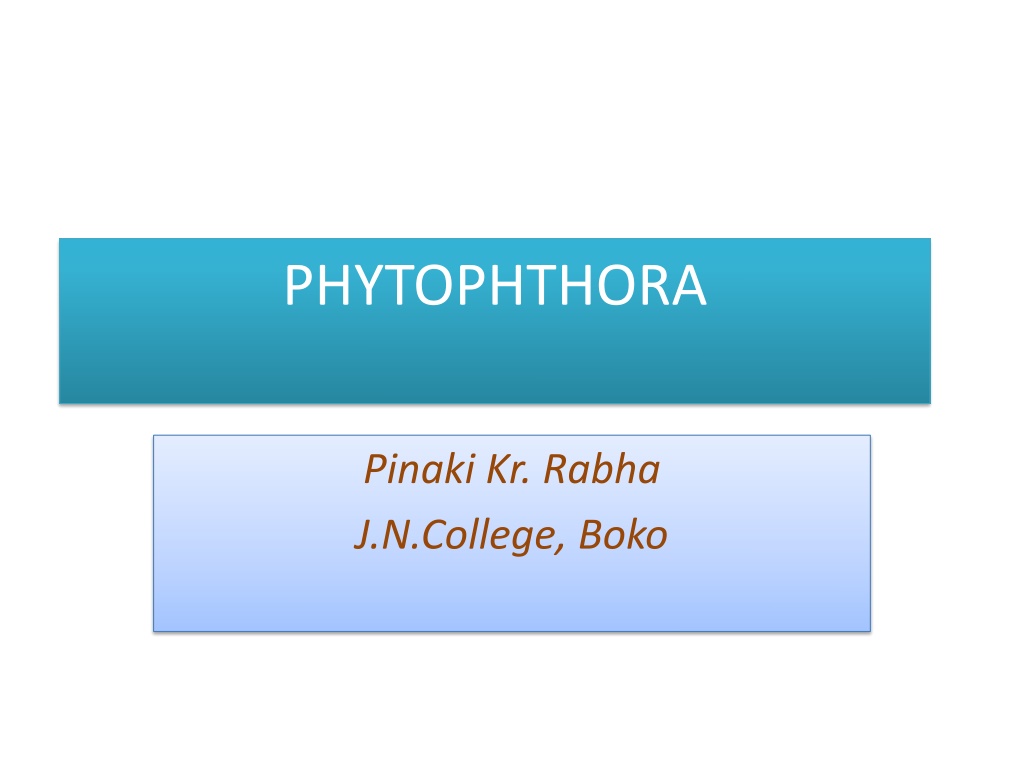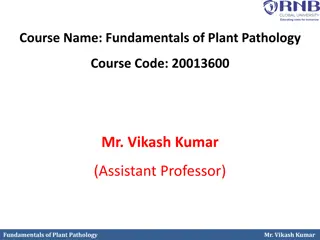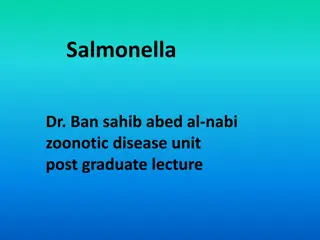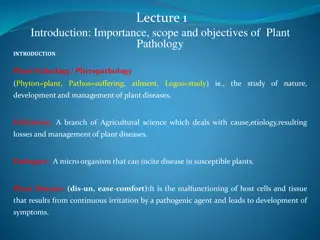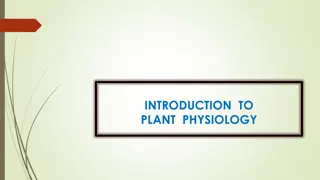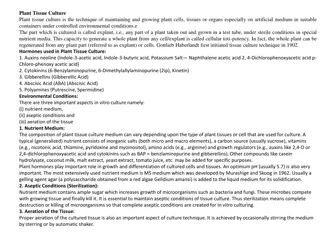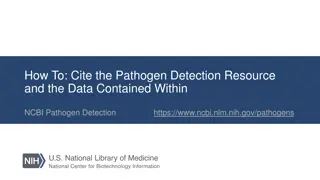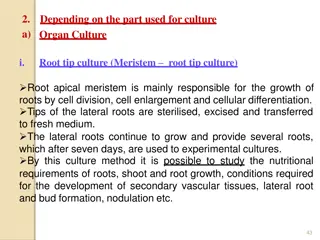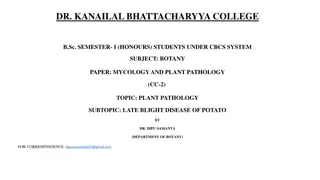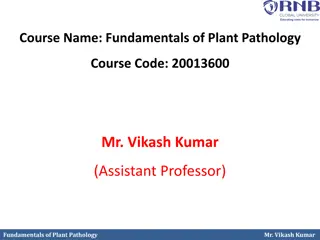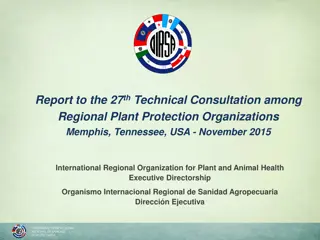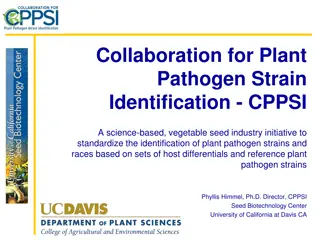Phytophthora: Destructive Plant Pathogen
Phytophthora is a destructive plant pathogen that infects various crops, causing symptoms like leaf lesions and rotting tubers. Its somatic structure includes profusely branched hyphae, and it reproduces asexually through zoospores. The germination process involves the spread of spores by wind and water, influenced by temperature. Learn more about this devastating fungus and its impact on agriculture.
Download Presentation

Please find below an Image/Link to download the presentation.
The content on the website is provided AS IS for your information and personal use only. It may not be sold, licensed, or shared on other websites without obtaining consent from the author.If you encounter any issues during the download, it is possible that the publisher has removed the file from their server.
You are allowed to download the files provided on this website for personal or commercial use, subject to the condition that they are used lawfully. All files are the property of their respective owners.
The content on the website is provided AS IS for your information and personal use only. It may not be sold, licensed, or shared on other websites without obtaining consent from the author.
E N D
Presentation Transcript
PHYTOPHTHORA Pinaki Kr. Rabha J.N.College, Boko
It is one of most destructive plant pathogen. It infects a number of angiospermic cultivated crops including potato, tomato, colocasia, areca nut, etc. The fungus is responsible for destruction of potato crops in Ireland in 1840s resulting famine and death of over a million people.
Symptoms of the disease The development of leaf rots or lesions varies with environmental conditions. Leaf lesions begins as small, irregularly shaped, light green to grey spots. In cool (20oC or less), moist environments, lesions expand rapidly to form a large black rots that spread the entire plants.
Infection on underground tubers is first seen in the form of discolorations of the tissues. In the later stages the infection spreads inwards, the entire tuber becomes brown and ultimately gets decayed. dry rot and brown
Somatic structure: It is profusely branched and consists of aseptate, hyaline, coenocytic hyphae . The mycelia are both inter and intracellular. Asexual reproduction: Asexual reproduction zoospores. They are sporangium. Sporangiophores emerge from the lower surface of leaves through stomata and bear terminal, lemon shaped sporangia with distinct papilla. The renewed sprangiophore gives it a zigzag, sympodial shape. is brought produced about by within growth of the
Germination of sprangia: The sprangia are disseminated by wind and soil water. The germination of sporangia depends upon temperature. Indirect germination: Low temperature favors for indirect germination of sporangia. The protoplasm of the sporangium divides into several uninucleate protoplasts. metamorphoses into a biflagellate, reniform, uninucleate zoospore. The sporangia bursts at the papilla and the zoospores are liberated. The liberated zoospores are deflagellated, then encyst and finally germinate to form a new hypha. Each protoplast
Direct germination: In high temperature and dry conditions, the sporangia behaves like germinate directly by forming multinucleate germ tube. as conidia and
Sexual Reproduction In Phytophthora oogamous. It is infrequent in P. infestans as it is a heterothallic species. On the basis of the position of sex organs, the species of Phytophthora are designated as paragynous or amphigynous. In paragynous type (P. cactora), the sex organs lie laterally, while in the amphigynous type (P. infestans and P. colocasiae),the antheridia forms a funnel or coller shaped structure at the base at the oogonium. sexual reproduction is
The oogonium is initially multinucleate, at maturity contain a protoplasm at the centre of the oogonium is called ooplasm, which contain the female nucleus and serve as female gamete. The antheridium is club shaped. At maturity it contains a single male nucleus. The male nucleus reaches the ooplasm through a fertilization tube formed by the antherium. single nucleus. The
Plasmogamy followed the karyogamy, results in a diploid zygote nucleus. It is surrunded by a wall and converted into oospore. After a rest period, it germinates zoosporangium at the tip of the germ tube. Zoospores of two mating types are found in equal numbers, which give rise to thalli of opposite mating types. and forms a
Sexual reproduction Phytophthora infestans
Graphic representation of the life cycle of phytophthora with zygotic meiosis
